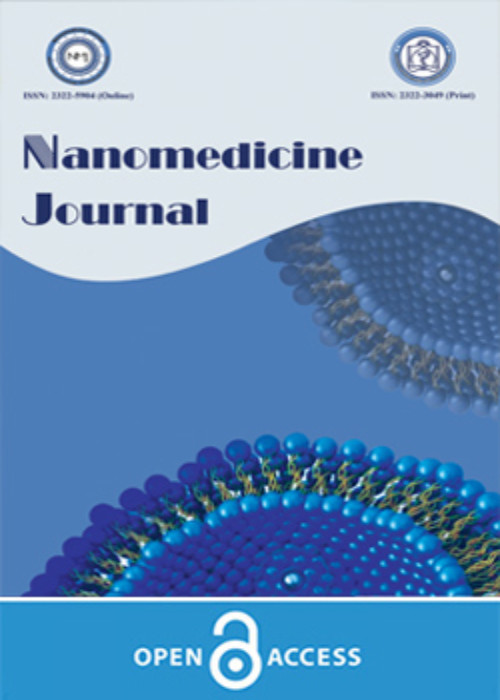Curcumin coated gold nanoparticles: synthesis, characterization, cytotoxicity, antioxidant activity and its comparison with citrate coated gold nanoparticles
Author(s):
Abstract:
Objective(s)
Biological applications of gold nanoparticles have limitations because of the toxic chemicals used in their synthesis. Curcumin can be used as reducing as well as capping agent in synthesis of GNPs to eliminate the cytotoxicity. Conjugation of curcumin to gold also helps in increasing its solubility and bioavailability.Materials And Methods
Here we report synthesis of gold nanoparticles coated with citrate and curcumin and of two different sizes via chemical routes. UV-Vis absorbance spectroscopy, Dynamic Light Scattering and Transmission Electron Microscopy were applied to study the average particle size, size stability of the samples and zeta potential. Fourier transform infrared, Raman Spectroscopy and Fluorescence Spectroscopy were applied for detection of curcumin on the surface of GNPs. The antioxidant activity was evaluated using DPPH assay and Cytotoxicity was evaluated by MTT assay.Results
Particles were synthesized of 6 and 16 nm size. The average particle size was found to be 21.7 ± 5.7 by TEM. The zeta potential on the surface of Cur-GNPs was negative and larger than 25 mV which is a sign of their high stability. The stability of these particles (with different coatings but with similar sizes) at different time intervals (up to 3 months) and also in different media like cell culture medium, different buffers, glucose and at different pH conditions have been investigated thoroughly. Appearance of functional groups assigned to curcumin in FTIR and SERS spectra are sign of presence of curcumin in the sample. The quenching of the fluorescence in the presence of GNPs reveals the clear indication of the capping and binding of curcumin with GNPs. Cur-GNP1 (16 nm) were found to exhibit highest antioxidant activity than other gold nanoparticles. Cytotoxicity evaluation using MTT assay on L929 cell line proved curcumin coated gold nanoparticles were non-toxic up to 40 ppm.Conclusion
The results revealed that larger curcumin coated gold nanoparticles were stable and also non-toxic and were found suitable for further in-vitro and in-vivo studies. Keywords:
Language:
English
Published:
Nanomedicine Journal, Volume:4 Issue: 2, Spring 2017
Pages:
115 to 125
magiran.com/p1671818
دانلود و مطالعه متن این مقاله با یکی از روشهای زیر امکان پذیر است:
اشتراک شخصی
با عضویت و پرداخت آنلاین حق اشتراک یکساله به مبلغ 1,390,000ريال میتوانید 70 عنوان مطلب دانلود کنید!
اشتراک سازمانی
به کتابخانه دانشگاه یا محل کار خود پیشنهاد کنید تا اشتراک سازمانی این پایگاه را برای دسترسی نامحدود همه کاربران به متن مطالب تهیه نمایند!
توجه!
- حق عضویت دریافتی صرف حمایت از نشریات عضو و نگهداری، تکمیل و توسعه مگیران میشود.
- پرداخت حق اشتراک و دانلود مقالات اجازه بازنشر آن در سایر رسانههای چاپی و دیجیتال را به کاربر نمیدهد.
In order to view content subscription is required
Personal subscription
Subscribe magiran.com for 70 € euros via PayPal and download 70 articles during a year.
Organization subscription
Please contact us to subscribe your university or library for unlimited access!


